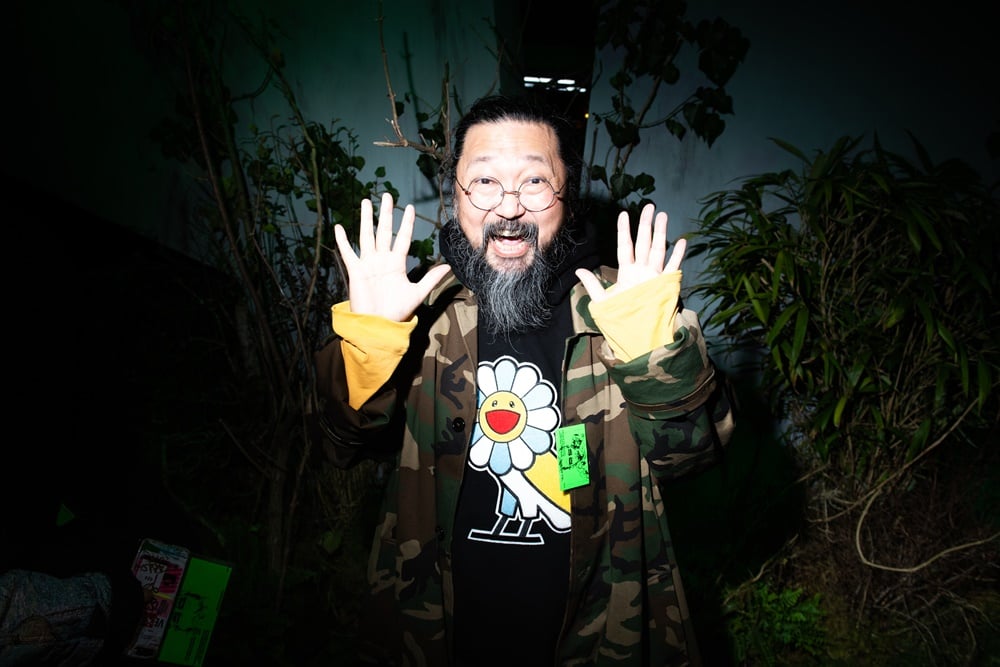
Global art star Takashi Murakami has split from his longtime dealer, Blum & Poe, after more than two decades together, artnet News has learned. The gallery, which has locations in Los Angeles, New York, and Tokyo, first began showing the artist’s work back in 1997. Murakami would go on to become one of the most widely recognized brands in the contemporary art world.
But much like happy marriages, artist and gallery relationships don’t tend to end when the going is good. So what prompted them to call it quits?
When asked why Murakami’s name no longer appeared on the gallery’s website, Blum & Poe confirmed the split but declined to provide details. “After 25 years of a mutually successful partnership, we have come to the decision that it is in both of our best interests that we no longer continue our working relationship,” a spokeswoman said in a statement. “We wish Takashi all the very best moving forward.”
Murakami’s company, Kaikai Kiki Studio, did not respond to artnet News’s requests for comment. But several sources we spoke with, who did not wish to be identified, said Murakami’s outsize ambitions led to clashes over money that ultimately sparked the end of the long-running partnership.
By many measures, Murakami is one of the most successful living artists of our time. He is world famous for his riotously colorful flower heads and cartoon-inspired characters with toothy grins. He has also become a sought-after collaborator for top-flight fashion brands and designers including Virgil Abloh. More recently, Murakami collaborated with 17-year-old music sensation Billie Eilish on the video for her new single, “You Should See Me in a Crown,” which one magazine dubbed the “brainchild of two of the most influential creatives of our time.”
In 2018, auction sales of Murakami’s work raked in $31 million, the second best year on record, according to data from artnet Analytics and the artnet Price Database. His top-grossing year was 2008—the peak of the art market—when sales of his work at auction made $37.5 million. No work of Murakami’s has surpassed the auction record set that year when My Lonesome Cowboy, a life-size naked manga-style figure, more than tripled its high estimate to sell for $15 million at Sotheby’s New York. Another work from the series sold for $2.9 million in 2017.
A film still from Takashi Murakami’s new video for pop star Billie Eilish’s single “You Should See Me in a Crown.”
Several sources told artnet News that Blum & Poe had been losing money with the artist’s practice for some time, though opinions differed about whether the artist himself or the gallery’s management was to blame. “That’s why he started doing collaborations, like that with [fashion designer] Virgil Abloh, so that he could start selling again because the other stuff wasn’t moving,” one collector told artnet News.
A major solo Murakami show titled “GYATEI²”—featuring giant gold flower sculptures and colorful flower paintings—wrapped up last weekend at Gagosian’s Beverly Hills branch (notably, Blum & Poe’s backyard). The show drew record attendance—almost ten times the average a typical exhibition at the LA gallery, a Gagosian representative said. (“That probably doesn’t feel so good to Blum & Poe,” noted the collector.)
An art advisor familiar with the Murakami market argued that galleries representing the artist bore responsibility for his shaky performance by releasing too much work over the years, some of which he described as “poorly edited and over-produced.”
According to a recent tally, Blum & Poe has organized seven solo Murakami shows (as well as two shows curated by the artist), in addition to various group shows. Perrotin Gallery, which has also been a longtime supporter, has held at least a dozen solo shows over the past two decades, included his work in numerous group shows, and says it has several Murakami projects in the works. Gagosian has held nine solo exhibitions with Murakami globally since 2007.
Tim Blum and Takashi Murakami attend Takashi Murakami on April 11, 2013 in Los Angeles, California. (Photo by Stefanie Keenan/Getty Images for Blum and Poe)
The recent turbulence raises questions about the evolving nature of the relationship between a gallery and an artist after that artist has become a celebrity, brand, and business in their own right. If a gallery considers part of its job to decide when and how much artwork is released on the market, what happens when the artist has conflicting commitments, or the artists’ galleries are unable to get on the same page?
“What [the artist] has accomplished is remarkable, but he’s pretty much independent of the gallery system,” one art expert told artnet News.
When asked to address some of the criticism and rumors about what caused the split, the gallery’s Tim Blum simply expanded on the gallery’s earlier statement, noting that in 25 years of working with the artist, “he has been a major influence on the direction of the gallery’s programming, as have all of the artists with whom we’ve collaborated for decades. We have matured and grown together, and organically over time, our approaches to the art field diverged. After a mutually successful partnership—one of friendship and collaboration—we have come to the decision that it is in both of our best interests that we no longer continue our working relationship. We’d like to highlight our gratitude for those years shared, and to wish Takashi all the best going forward.”